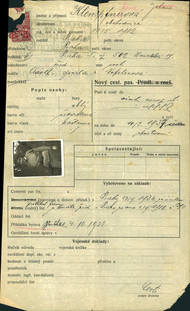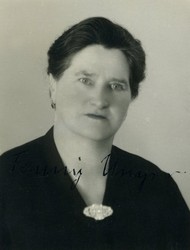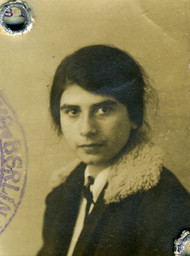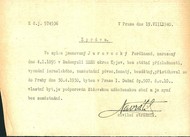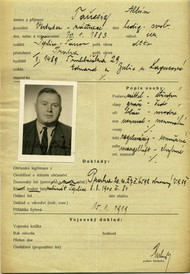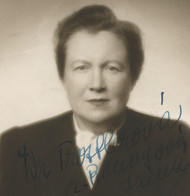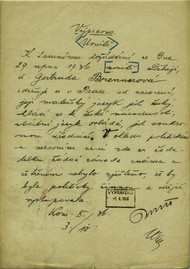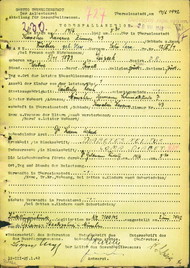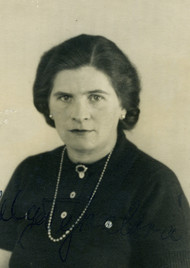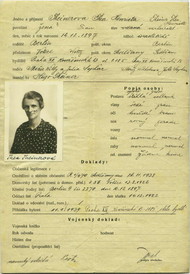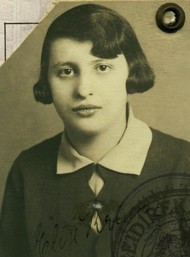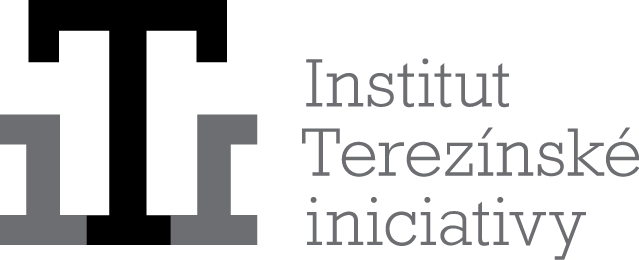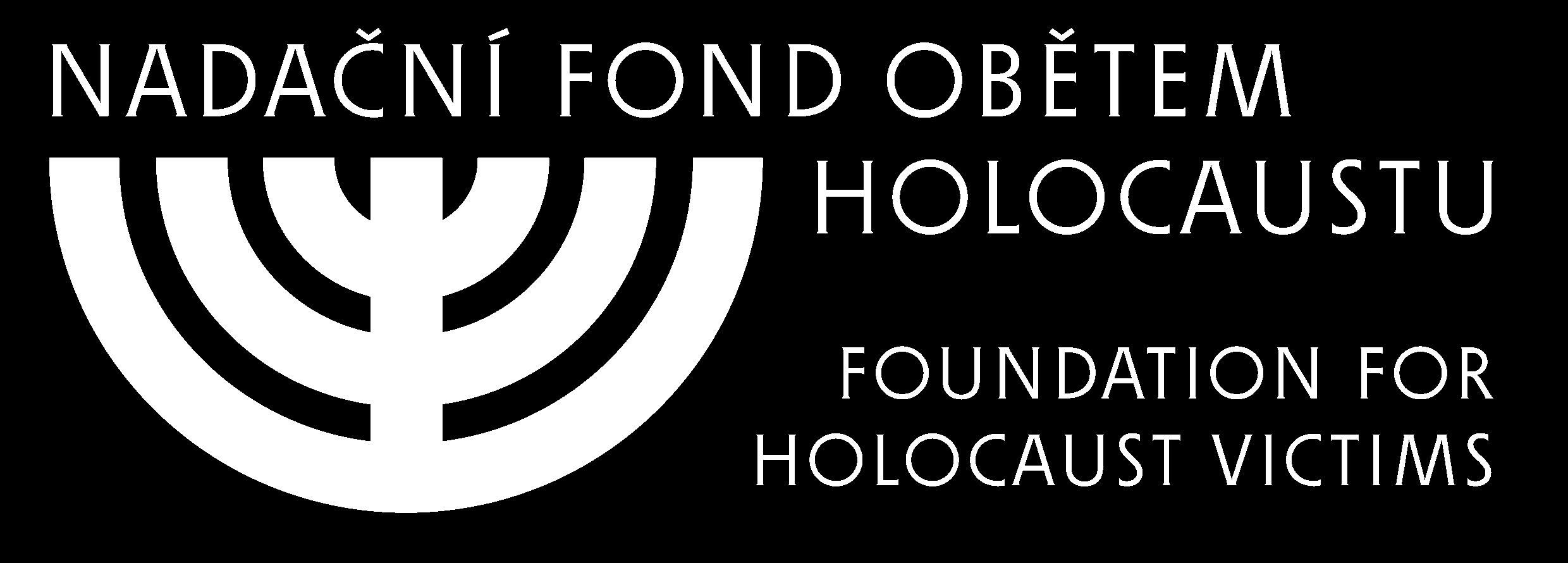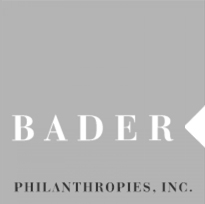One of the specific features of the Terezín ghetto was the role that it played in Nazi propaganda. The Nazis' attempts to use Terezín to cover up their actual plans and what they were really doing to Europe's Jews reached their height in June 1944, when a delegation from the International Committee of the Red Cross visited Terezín for a day.
The International Committee of the Red Cross had been trying unsuccessfully for some time to gain permission to visit one of the Nazis' main concentration camps, to which Jews from all over Europe were being deported. When in June 1943 the Head Office for Reich Security made its first positive statement regarding permission to visit the Terezín ghetto, it was part of an attempt by the Nazis to persuade the world that there was no truth in the growing number of reports that Jews were being murdered. The Terezín ghetto was chosen as the place that would be used to hide the true dimensions of the ongoing genocide, and to provide the Nazis with a fraudulent alibi.
Changes aimed at improving
the outward appearance of the situation in the ghetto had been taking place since spring 1943. In May the ghetto was renamed a Jewish settlement
, and the daily orders became information from the autonomous administration
, published in the form of decorative posters. A Jewish administration bank
was also founded in Terezín at the same time. It used special Terezín money, which in reality was entirely worthless notes. Over the following summer, the streets in the ghetto were given civilian names rather than the military-style letters and numbers that had previously been used.
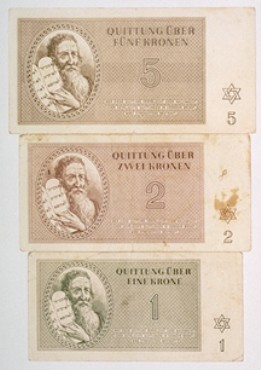
Courtesy of USHMM Photo Archives.
The specific impulse that led to the decision to embellish
Terezín was a request from the Danish Red Cross that its representatives be allowed to visit the 466 Danish Jews who had been deported to the ghetto in October 1944. The Danish authorities intervened on behalf of their citizens with the German authorities in Copenhagen and Berlin. However, it was unthinkable for the Nazis that they should allow an official foreign visit in the critical conditions in which the prisoners of the Terezín ghetto lived. They decided to deal with the situation by embellishing
Terezín to an extent that would allow them to present it to a foreign delegation.
This embellishment
of the town meant creating a sufficiently convincing shiny
facade that would hide the actual situation of the Terezín Jews. At the instigation of the German Foreign Ministry and the German Red Cross, the SS ordered the embellishment
(Stadtverschönerung
) at the end of 1943. It did not get going fully until the start of 1944.
Prisoners had to clean and mend the roads and buildings in the ghetto. The central square, into which Jews had not previously been allowed, was given a new lawn and rose bushes. Shops, cafés and a spa-style bandstand sprang up in the ghetto. Benches were installed in various places, and a children's playground, nursery, preschool and school were set up. Decorative signs appeared in the streets, pointing the way to the bank, post office, swimming pool and café. The improvements to the facade
of the Terezín ghetto also concerned the interiors of some dormitories and apartments, especially those on the ground floor of the buildings past which the delegates were to walk. The common rooms, concerts and theatre halls were also altered. There were also changes to some of the usual orders: compulsory salutes were abolished, and the night curfew was put back to 10 p.m. The area to which Jews were confined was also enlarged.
In May 1944, 7,500 prisoners were deported from Terezín to Auschwitz with the aim of reducing the shocking overcrowding in the ghetto during the visit. By then, Terezín had been so embellished
that Himmler gave his permission for a visit to the Terezín ghetto and one labour camp (the camp meant was probably the family camp at Auschwitz-Birkenau) by a delegation of the International Committee of the Red Cross and representatives of Denmark and Sweden.
A detailed plan for the visit was drawn up, so that no unforeseen mistakes would betray the whole camouflage effort. The prisoners were ordered to put on their best clothes for the day of the visit, while war veterans and cripples were banned from coming out into the street. The whole route of the inspection was monitored several times in in advance.
The three-member delegation visited the ghetto on 23 June 1944. It consisted of two Danes - Frants Hvass from the Foreign Ministry, and the plenipotentiary of the Danish Red Cross, Juel Hennigsen - and a functionary from the International Committee of the Red Cross, Maurice Rossel from Switzerland. The delegation was accompanied by a number of high-ranking Nazi functionaries, representatives of the German Red Cross and the Terezín Jewish elder
, Paul Eppstein. The delegates were allowed to talk to the Danish prisoners, but were effectively prevented from making contact with other Jews. The guests visited the headquarters of the Jewish autonomous administration,
where Dr. Eppstein welcomed them and gave them manipulated statistical data about the ghetto, concerning the state of the inhabitants, mortality, food rations and so on. The tour of the ghetto continued with a visit to the steam laundry, the dining room, living quarters for Jewish workers, bakers, children's convalescence rooms and a social hall where a children's opera was performed as if by chance. The visitors passed a building that a month earlier had become a school,
but where no lessons had ever taken place. They visited the accommodation of some of the Danes and prominent prisoners, the pharmacy, bank, post office, shop, butcher's, fire station, spa, surgery and other fictitious institutions that had been created only in order to show to the delegation.
The whole tour, including lunch, took around eight hours. All three delegates wrote a report after their visit to Terezín, of which the most scandalous was that produced by Maurice Rossel (link in Czech). While Hvass and Henningsen's reports failed to uncover the Nazi lies, they expressed sympathy to the Jews and were restrained in their statements. However, Rossel's report was entirely in keeping with the Nazi aim of presenting Terezín as a totally normal Jewish town that really did have its own administration. Among the most scandalous claims was that the SS police gives the Jews the freedom to organise their administration as they see fit,
and The Terezín camp is a final camp, from which no one who has once entered the ghetto is normally sent elsewhere.
The Nazi attempt to hide the truth about Terezín was in this regard successful.
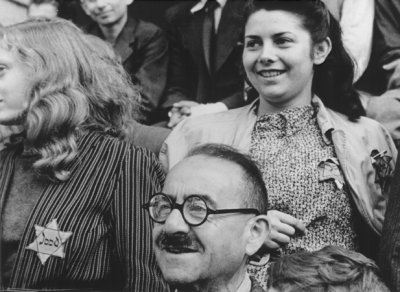
Shot from the propaganda film Theresienstadt. Ein Dokumentarfilm aus dem jüdischen Siedlungsgebiet
. Courtesy of USHMM Photo Archives.
The embellishment
activity continued with the shooting of a propaganda film in Terezín only a few weeks after the visit by the representatives of Denmark and the International Red Cross. During August and September 1944 Nazi filmakers made a film whose original title was probably Theresienstadt. Ein Dokumentarfilm aus dem jüdischen Siedlungsgebiet
. Since it was not finished until the last weeks of the war, it was never shown to the wider public. In the last months of its existence, Terezín was also shown, in its embellished
form, to other foreign visitors.
However, the embellishment
was of little use to the over 18,000 prisoners who in autumn 1944 were deported from Terezín to Auschwitz.
-
See also:
-
Authentic report of Maurice Rossel. (In Czech)
-
Claude Lanzmann's interview with Dr. Maurice Rossel. (In Czech).


